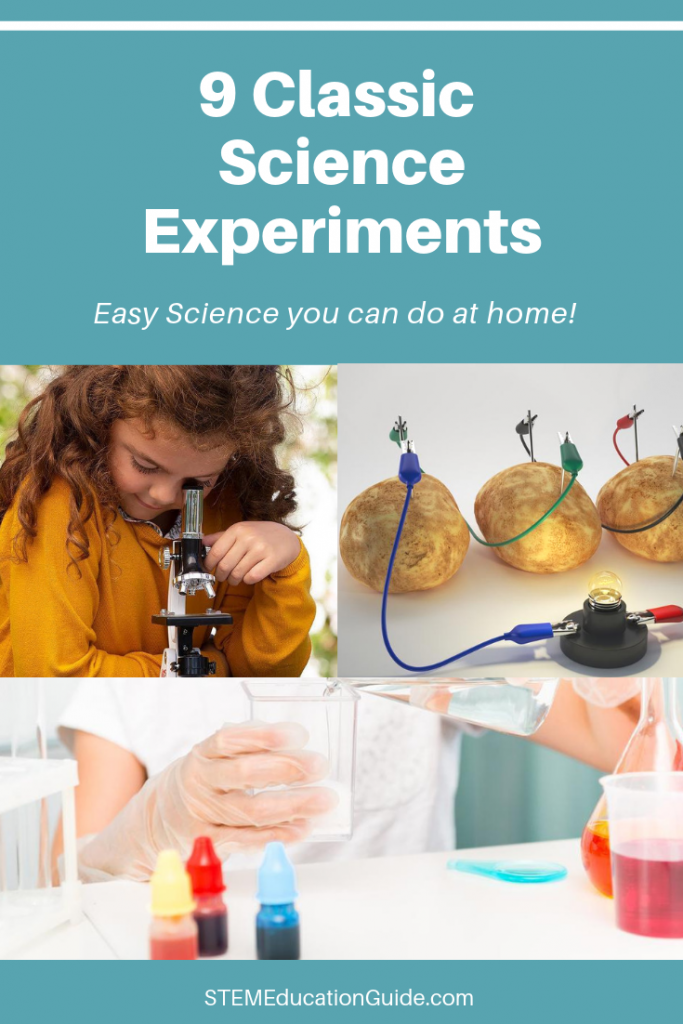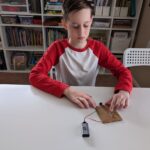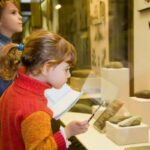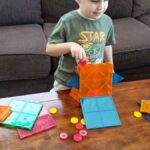Let’s face it: Kids need things to entertain them during breaks from school.
As tempting as it can be to let them spend their off days watching TV or playing video games, it’s best to keep them busy with guided activities that offer an educational component.
We know that no parent wants to force their child to sit quietly and study when school’s out (and that might be cruel, depending on who you ask), so it helps to get a little creative.
These hands-on science experiments will help encourage active learning at home, conveying concepts ranging from chemistry to botany, while also offering some old-fashioned, screen-free entertainment.
Table of Contents
1.Watch Mentos and Diet Coke Comingle
Let’s start with a classic, made famous first by Lee Marek’s “Kid Scientists” segment on the Late Show with David Letterman and then later, of course, by science teacher Steve Spangler on YouTube.
This legendary science experiment requires you to mix Diet Coke and Mentos mints, creating a soda geyser. The reaction occurs because the mints release a gas that pushes the Diet Coke up and out of the soda bottle.
Diet Coke is recommended because it’s less sticky than the full-calorie stuff, but regular Coke will work too.
2. Build a Lifelike Volcano
Another classic science lab experiment, the baking soda and vinegar volcano is meant to demonstrate the chemical reaction between these two ingredients—an acid and a base—which mix to create the gas carbon dioxide.
It’s one of the simplest and most effective ways to introduce youngsters to fundamental chemistry concepts. You can build the volcano part using papier-mâché or clay and ask your kids to paint it. See instructions here
3. Observe the World Around You Up-Close
There are so many fun science experiments to do with a microscope, but our very favorite is to zoom in on the world around us. Have your kids scour their environment for fun things to observe on a microscopic level, such as the cells of plants (including vegetables like onions), strands of hair, spiderwebs, salt, sugar, and more. They’ll have a blast just looking for stuff to observe!
You can take this one to a whole new level by purchasing a kids’ microscope kit that comes with all the basics and accessories you need to turn your home into a well-outfitted science lab for kids.
4. Make Magnetic Slime
It doesn’t matter how old you are; it’s hard to resist the stretchy, tactile experience of smooth slime. Kids love to make it at home, and there are so many ways to jazz up your basic slime recipe so that it’s extra entertaining.
To give your slime session a scientific spin, create magnetic slime using school glue, water, borax, and magnetic power. Test the properties of magnets with this funky, slimy goop and whatever magnets you have lying around the house. See instructions here.
5. Plant an Herb or Vegetable Garden
To demonstrate some of the fundamentals of plant science while also introducing a culinary component, consider teaching your kids how to plant an herb or vegetable garden.
If you don’t have much green space outside your home, you can easily create a low-maintenance herb garden indoors.
If you’ve got some outside soil to spare, go big with tomatoes, squash, carrots, and beans. This is a great one for parents looking for long-term projects that’ll keep kids entertained throughout the summer.
As an added bonus, take some herbs and sliced vegetables to observe under a microscope to make the most of this activity.
6. Make a Do-It-Yourself Lava Lamp
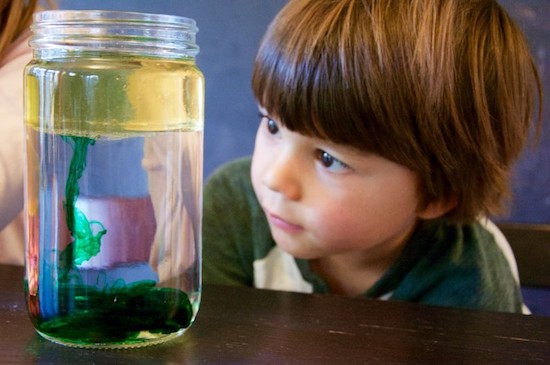
Everybody loves the mesmerizing, floating slime lamps that dominated home décor of the late 90s, but did you know that you can make them at home?
This awesomely bewitching experiment just takes a few, basic ingredients—an empty bottle, vegetable oil, water, Alka-Seltzer, and food coloring — and a few minutes to complete. The Alka-Seltzer, water, and oil mixture react in a way that creates a colorful, slimy show you could watch for hours. See instructions here.
7. Turn a Potato into a Battery
As far as edible science supplies go, the humble spud is surprisingly versatile. You can even use it to generate enough electricity to light a light bulb. The experiment requires you to fashion a russet potato with copper wire and galvanized nails to create power.
This is one of the simplest yet most effective ways to introduce youngsters to something they take for granted every day—electricity! Because it requires a knife and electrical components, this one’s best for kids who are middle school age and up. See instructions here.
8. Make a Bottle and a Coin Pop
Who are we kidding? Kids love explodes, pops, or crackles, so this one is always a big hit. All you need to complete it is an empty plastic bottle, water, a coin, and a small square of paper towel.
This experiment requires you to freeze the bottle with the coin on top (using the wet paper towel square as a seal).
When you take it out of the freezer and warm it with your hands, the gas inside the bottle expands, forcing pressure to build up and causing the container to pop, sending the coin flying! See instructions here.
9. See How Long a Twinkie Lasts
Did you know that Twinkies have an exceptionally long shelf life, as far as baked goods go? Those yummy, cream-filled pastries on gas station shelves can last for up to 45 days, all because they’re chock-full of 30-plus ingredients that help them stay fresher for longer.
The longevity and durability of these undeniably delicious cakes make them a good subject of scientific study.
You can observe their shelf stability, expose them to extreme temperatures, and even immerse them in different liquids to see how the chemicals react. You can even eat a few—we won’t judge. Get ideas here.
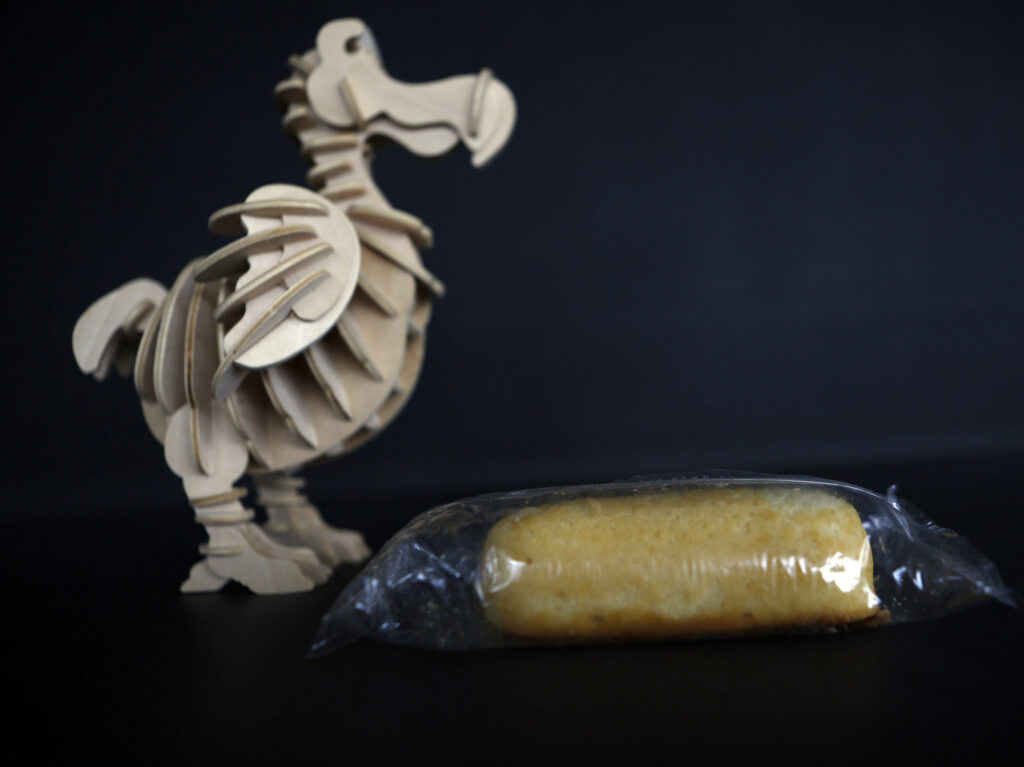
Engaging Kids with Active Learning
Chances are, you don’t remember a whole lot of specifics about your time in school, but you probably remember some of your time in the science classroom or experimenting at home with your friends, siblings, and parents.
These awesome science activities will help forge a deep love for scientific inquiry in your children while also creating lasting memories they’ll cherish for a lifetime. Just remember to supervise your children for safety reasons—plus you can be right alongside them making memories as well.
